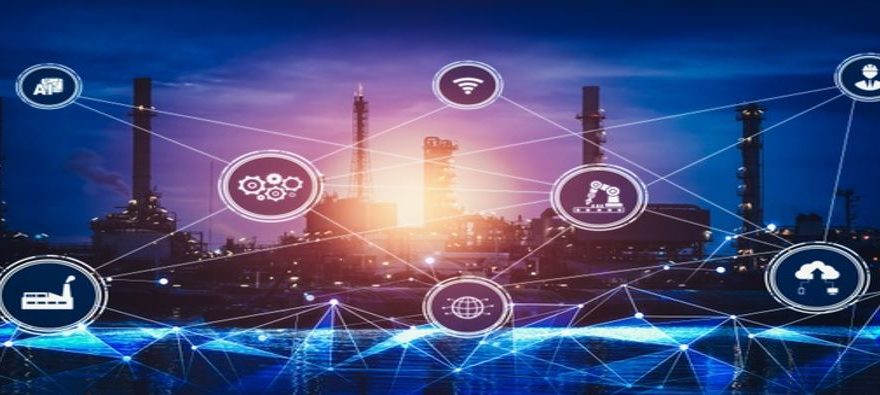In the first part of this series of articles on digitization, industry 4.0 and the industrial sector, I wrote about the evolution that digitization has experienced in recent times in all aspects of our personal and professional lives, much of it associated with the pandemic that has been hitting us since the beginning of 2020. We also explained the basic technical foundations on which Industry 4.0 is founded.
In the first part of this series of articles on digitization, industry 4.0 and the industrial sector, I wrote about the evolution that digitization has experienced in recent times in all aspects of our personal and professional lives, much of it associated with the pandemic that has been hitting us since the beginning of 2020. We also explained the basic technical foundations on which Industry 4.0 is founded.
As I have just said, the first thing to state as clearly as possible is that this whole issue affects not only manufacturing processes. Its scope is much broader, affecting all industries and sectors and even society. Industry 4.0 can improve business operations and revenue growth, transforming products, supply chain, and customer expectations. This revolution is likely to change the way we do things, but it could also affect how customers interact with them and the experiences they expect to have while engaging in that interaction with businesses. Beyond that, it could lead to changes in the workforce, as we discussed in part one, requiring new skills and roles.
Furthermore, technologies related to Industry 4.0 can also lead to entirely new products and services. The use of sensors and portable devices, analytics and robotics, among others, will enable product improvements in a variety of ways, from prototyping and testing to adding connectivity to previously disconnected products. These changes in the products mean, in turn, changes in the supply chain and, consequently, in the customers.
How this is going to affect organizations is something that will have a general component and a particular component of each company. It will depend on the sector, on how prepared the company is, on the mentality of its leaders and employees to start a disruptive environment, on its culture of innovation and acceptance of changes, which in turn will dictate the speed and pace of this adaptation, of their economic capacity, etc. In general, three levels of involvement can be understood:
-
General of the economy or sector. In addition to the change in which companies operate and in the production of goods, Industry 4.0 affects all agents of the ecosystem (suppliers, customers, regulatory considerations, investors, third parties …), because these technologies allow interactions between each point of a network.
-
Particular of organizations or companies. The ability to adjust and learn from data in real time can make organizations more responsive, proactive, and predictive. It also allows the organization to reduce its risks in terms of productivity.
-
Particular individual of each worker. There are two planes in this sense:
-
Professional training. Industry 4.0 can mean different things to everyone. For example, for employees it may mean a change in the work they are going to do, while for customers it would mean greater customization in products and services that better meet their needs.
-
Emotional. In light of the above, many will see it as an opportunity to study new careers that will emerge at the risk of this phenomenon, or to recycle if they are within the system, etc. But it is no less true that many others, especially in lower-skilled jobs with fewer recycling possibilities, will see it as a threat.
-
The last point should not be negligible at all, as it represents a stumbling block on the implementation of Industry 4.0 in organizations. The representative social forces of the labor force, in unionized societies, which are those that are fundamentally in non-Anglo-Saxon democratic countries, can exert significant public and political pressure in the face of existing reluctance. There is no doubt that in the political framework, firm and unwavering support for this phenomenon from institutions and parties will be essential, not only with small mouths and to receive funds from the European Union because they require projects of this type to give them. This is structural movement, not conjunctural or of opportunity.
The most important benefits that the industry can obtain from this phenomenon are diverse in nature, but fundamentally they can be grouped into two groups:
-
Internal benefits -> those that will allow an optimization of the processes and consequently also of the products. The immediacy of data in real time, automated decision-making based on artificial intelligence algorithms, etc., will lead to increases in efficiency and productivity, reduction of defects, increased safety of facilities, reduction of environmental problems, financial and particularly cash management, so important in these times and from now on, and especially the control of the Supply Chain (supplier, planning, stocks and storage, and the logistics chain) and other undoubted advantages internally.
-
External benefits -> the Industry 4.0 phenomenon will provide the possibility of generating new products and services. Remote machinery diagnostics without the need for technicians to visit customer facilities, scheduled maintenance services, more immediate attention to customer needs, reacting more quickly to them and even anticipating them in some cases, which will cause a more fluid and higher quality interaction between the customer and the supplier.
An important effect that can occur in our industry is the reduction of the importance of size. We know that we have two major problems in the industry, which I have already referred to in other articles, and which are, as I say, well known:
-
The weight of Spanish industry in GDP is 14%, 11% if we only count manufacturing. This is very low compared to the leading countries, such as Germany, where it is around 25%.
-
Even in the most industrialized areas of Spain, such as Catalonia (18%) and even higher in the Basque Country (almost 25%) there is a size problem. We already spoke in its day about the impacts that this produces in terms of competitiveness and decision-making power on the subsidiaries that are established in our country.
Recovering this situation that has been brewing for many years is not going to be easy, nor it is going to be achieved in a short time. It requires resources, active reindustrialization policies and clear bets that are not currently seen in the present Spanish panorama. But it is no less true that Industry 4.0 reduces the impact of the size and deployment of the industrial fabric. The remote service, the new interaction with the customer, the control of the variables of the production process and the entire supply chain, all in real time, makes size and positioning matter less, once the system is implemented. Naturally, until reaching the optimum point of implementation there is a path in which the financial muscle and human and material resources will be an important asset.
What seems beyond doubt are the enormous operational and managerial benefits that Industry 4.0 brings. At this point, with more or less emphasis and to a greater or lesser extent, almost the entire industrial spectrum agrees that it is a safe bet. Naturally, it presents a barrier to entry: this bet is very capital intensive. This means that companies should not find themselves alone in it. Industry is not the only beneficiary of all that is at stake: society as a whole is. And for this reason, it is logical and in some way fair that the effort is collective, and that industrial companies follow this path coming along with clusters, associations and organizations of companies and workers and of course, with the public powers. It is an industry project, but above all it is a society project. Otherwise it will be once again a vain attempt to revitalize the sector that has been stranded. And we will return back to square zero again.

